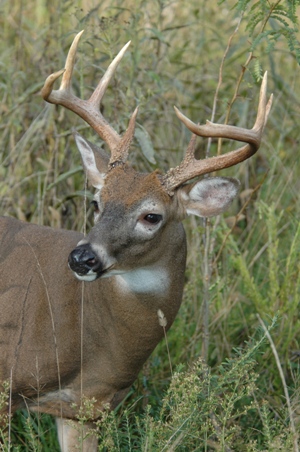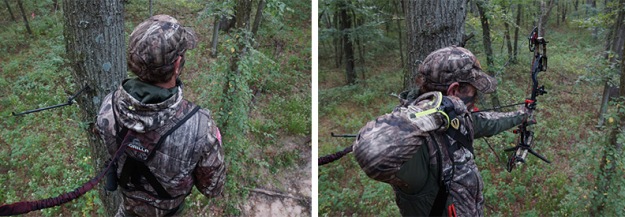 As days shorten, drivers should be extra cautious because their chances of encountering deer on roadways increase significantly.
As days shorten, drivers should be extra cautious because their chances of encountering deer on roadways increase significantly.
Nearly 50 percent of all vehicle accidents involving white-tailed deer occur between October and December, according to Chad Stewart, deer research biologist for the DNR. With their breeding season approaching, deer become more active in the fall. This leads them to encounter roads more frequently, increasing the opportunity for a collision.
Indiana Crash Facts, an annual report compiled by the Indiana Criminal Justice Institute, Center for Criminal Justice Research and the IUPUI School of Public & Environmental Affairs, reported 15,205 deer-related collisions in 2011, the most recent year for which statistics were available.
"With the number of deer and the number of vehicles out there, deer-vehicle accidents will happen," Stewart said. "The best thing drivers can do is to take measures to keep them to a minimum."
Knowing the following information and practicing defensive driving will help reduce your chances of becoming a deer-vehicle collision statistic:
- Deer are most active between sunset and sunrise.
- Deer often travel in groups, so if you see one, another is likely nearby.
- Be especially careful in areas where you have seen deer before.
- Use high beams when there is no opposing traffic; scan for deer's illuminated eyes or dark silhouettes along the side of the road.
- If you see a deer, slow your speed drastically, even if it is far away.
- Exercise extreme caution along woodlot edges, at hills, or blind turns.
- Never swerve to avoid hitting a deer; most serious crashes occur when drivers try to miss a deer but hit something else.
Drivers should pay attention to traffic signs warning of deer crossings and may want to steer clear of gimmicks sold to keep deer away.
"Deer crossing signs have proved effective, but motorists tend to get acclimated to such signs, and their efficiency can be reduced over time," Stewart said. "Fancy whistles or reflectors can be placed on your car to scare deer away, but truth be told, they are not proven to be effective."
Stewart said that even when practicing safe driving, sometimes hitting a deer is inevitable. Caution is also the best approach after the fact.
"If you hit a deer, remain calm," he said. "Do not approach the deer unless you are sure it has expired. Despite their gentle nature, their hooves are sharp and powerful, and can be extremely dangerous."
Stewart said that, like cars and people, deer can be found anywhere, so drivers should be on the lookout no matter where they are.






























